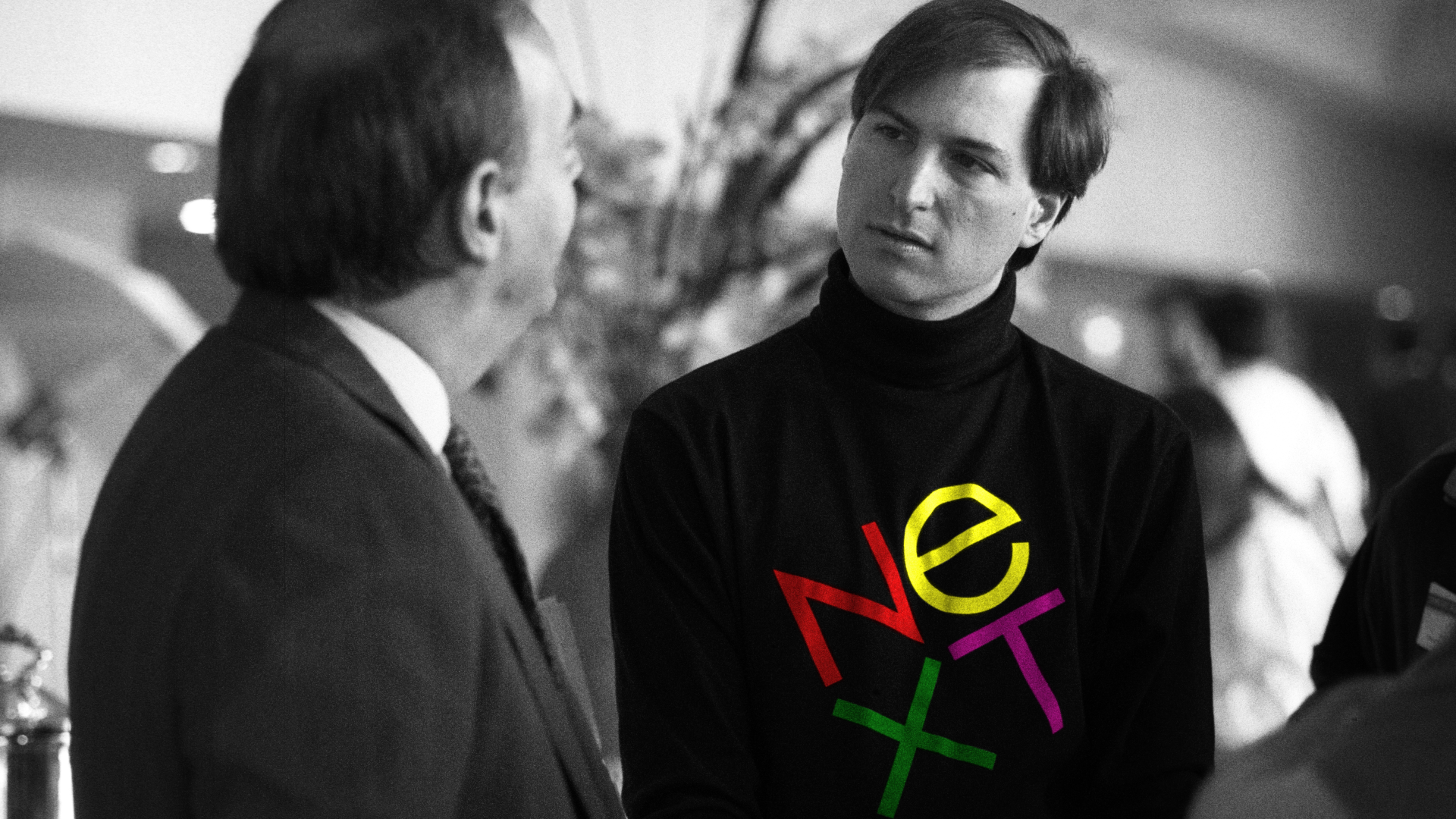- Steve Jobs left Apple in 1985 and then used $12 million of his own money to start a new computer company called NeXT.
- The operating system for NeXT computers was called NeXTSTEP. It was built on top of UNIX, an operating system that dates back to the 1960s.
- When NeXT failed to take-off, Apple bought it for $429 million. That same year, Steve Jobs returned to Apple.
- NeXTSTEP was used as the foundation for Mac OS X, which millions still use today.
- Visit Business Insider’s homepage for more stories.
Following is a transcript of the video.
Narrator: In 1985, Steve Jobs walked out of the doors of Apple and used $12 million of his own money to start a new computer company.
Steve Jobs: Hi, I’m Steve Jobs, and I make computers.
Narrator: NeXT would ultimately be viewed as a failure. But that failure actually saved Apple. Apple went public in 1980 and was valued at $1.8 billion. But a few years later, Apple was struggling. Both the Apple III and the Lisa failed to become commercial hits. So in 1983, Jobs decided to recruit John Sculley, who was the CEO of Pepsi at the time, famously asking Sculley: “Do you want to sell sugared water for the rest of your life? Or do you want to come with me and change the world?”
And with that, Sculley was convinced. He left Pepsi and became the CEO of Apple. But tension started to grow between him and Jobs. Because of internal struggles and product failures, Jobs' role was diminished. It was around this time that Jobs came up with an idea for a new computer company, separate from Apple. But he wanted to recruit five Apple employees. This furthered tension between Apple and Jobs. Something had to change. So in 1985, Steve Jobs left Apple. And moved on to launch a new company called NeXT.
Jobs: So, what should we do?
Narrator: With NeXT, Jobs wanted to create computers for universities and researchers. NeXT was a project where Jobs could regain the control he had lost at Apple, and he was confident enough in this idea to invest $12 million of his own money. In 1988, NeXT released its first computer. It was a powerful machine that embodied similar design philosophies to current-day Apple. Even down to its custom circuit board. But the NeXT computer was expensive. Very expensive. While other computers at the time ranged from $700 to a few thousand dollars, the NeXT computer had a base price of $6,500.
But the education market it was targeting already had a lot of older computers and limited budgets. NeXT's computers never found mass success. So in 1993, NeXT completely stopped developing its hardware and shifted its focus to the real innovation: software.
The operating system for NeXT computers was called NeXTSTEP. It was built on top of UNIX, an operating system that dates back to the 1960s. Using UNIX as its base gave NeXTSTEP several key advantages over Mac OS, like object-oriented programming and protected memory, which meant fewer system crashes. And it used developer tools like Interface Builder, which made creating programs much more intuitive. Despite NeXT computer's struggles, the software was popular.
Jobs: People told us they love NeXTSTEP and they love the fact that we built it on top of UNIX.
Narrator: Programmers used NeXT machines to develop iconic games like "Quake" and "Doom." Even Tim Berners-Lee was a fan. He built the first web browser on a NeXT computer. But NeXT couldn't survive on software sales alone, and this is where Apple comes back into the story.
After Jobs' departure, Apple found little success and continued to struggle. Under Sculley, the company developed several failed products, like the Newton MessagePad.
Jobs: Who wants a stylus? Yuck.
Narrator: In 1993, Apple's profit dropped 84%. Sculley resigned from Apple that same year. And with the success of Windows NT and Windows 95, Mac OS was falling behind. Apple needed a new, modern operating system if they were going to survive the next decade. So Apple's CEO at the time, Gil Amelio, turned his attention to NeXT.
With NeXT, Apple could finally have an advanced operating system to compete with Windows. In 1997, Apple bought NeXT for $429 million. That same year, Steve Jobs returned to Apple. Eventually, he would once again become CEO. But the big part of the deal? Apple would acquire the NeXTSTEP operating system and use it to replace Mac OS, which was on version 8 at the time, combining NeXT's software with Apple's hardware.
In the original press release, Apple stated: "The integration of NEXTSTEP technology in future versions of Mac OS will result in a robust, next-generation OS."
Soon after the acquisition, Apple started to develop what would become OS X, based on the NeXTSTEP operating system. OS X integrated major NeXTSTEP features, like the dock and the mail app, and minor touches, like the spinning wheel. Though most of the similarities could be found under the hood. OS X used the same programming language, Objective-C, and the Interface Builder tool. The first release of OS X in 2001 was a glimpse at the future of the Mac. The Aqua interface was a radical design change from previous versions. And OS X also introduced things like System Preferences and the column view in Finder.
But it would take several years for Apple's investment to pay off. Initially, OS X was sluggish and had stability issues. It also required more memory than many Macs shipped with at the time. But with the release of 10.2, just over a year later, Apple improved stability and speed and cemented the popularity of OS X.
Tim Cook: We love the Mac.
Narrator: From the Dock to the way programs are designed, OS X looks similar 18 years and 14 versions later. Even in 2001, the user interaction felt modern and intuitive. And the work Apple did based on the original NeXT operating system has helped to form the foundations of iOS, watchOS, and tvOS. If it's an Apple operating system, you can trace its origins to NeXT.
In December 2001, Macworld wrote, "We've been waiting for years, but Mac OS X is now truly the operating system of tomorrow." They were right. Almost 20 years later, millions are still using it.

